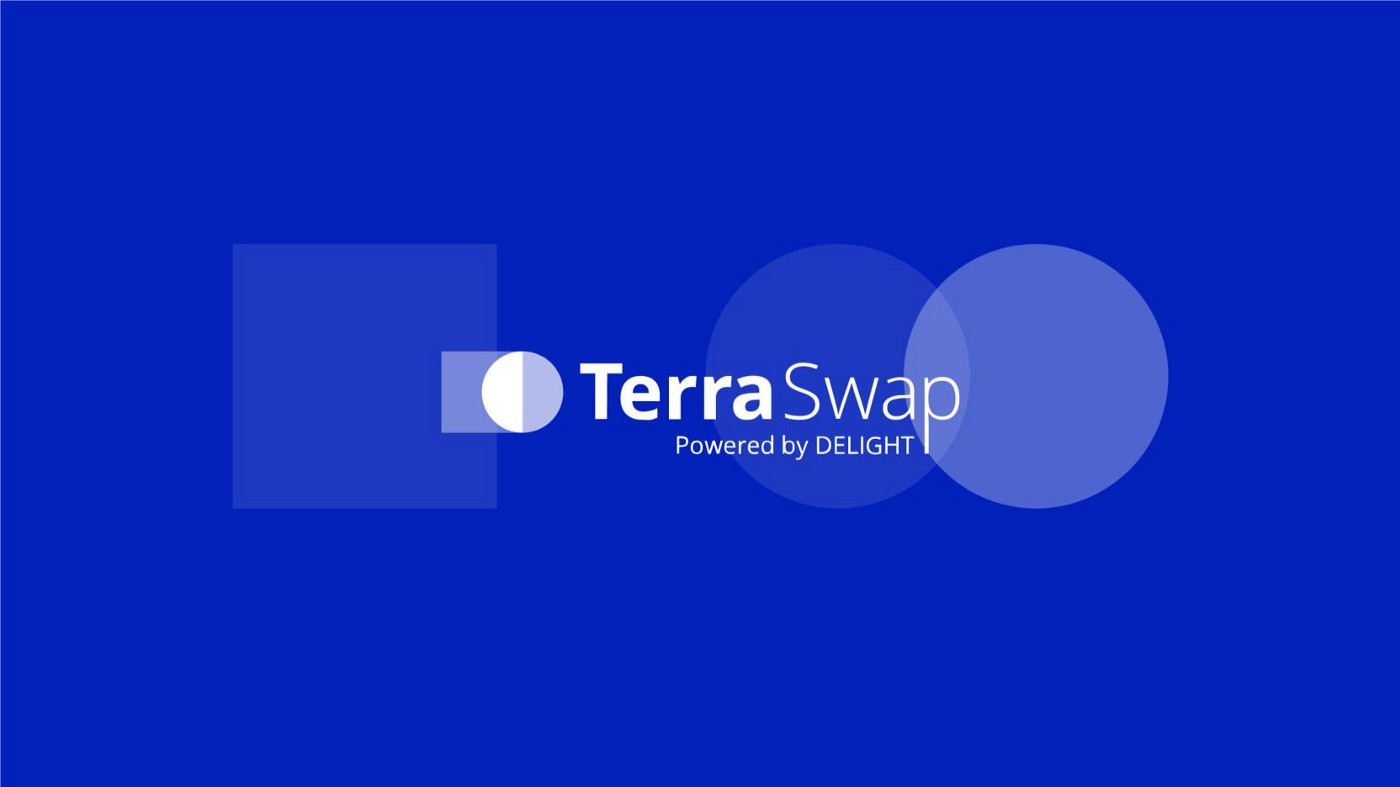In an ecosystem where projects build on top of one another or introduce collaboration, it significantly expands the potential and use cases for UST. Besides Anchor Protocol mentioned in the previous lesson, here are some of the more popular protocols in the Terra ecosystem.
Terraswap
Terraswap is a Uniswap-inspired automated market-maker (AMM) protocol implemented with smart contracts on the Terra blockchain. This enables a decentralized on-chain exchange for the various assets involved in the Terra ecosystem.

Simply put, Terraswap allows users to swap tokens and create liquidity pairs on the Terra blockchain. These pairs (also called pools) provide the liquidity for users to swap tokens on-chain. Pools maintain balances of both assets to ensure there is always an available bank of tokens for trading. Users providing liquidity earn reward-bearing LP tokens in exchange.
Terraswap was Terra’s original swap protocol.
Astroport
Astroport is Terra’s latest next-generation AMM built to improve pricing and trade efficiency. Astroport allows for multiple pool types, dual farming and has its own native token ASTRO which allows for governance.
Astroport currently allows for 2 pool types (Constant Product and Stableswap Invariant) to manage tokens, which allows it to accommodate a wide variety of token markets.
Rather than depositing Astroport LP tokens directly in third-party staking contracts, LPs can deposit their tokens into one of Astroport’s ASTRO Generators which forward LP tokens into relevant third-party staking contracts. This allows users to receive two sets of rewards (ASTRO and the third-party protocol token).
Users will be able to stake ASTRO to receive xASTRO. xASTRO awards users a share of trading fees and the ability to participate in governance in the Astral Assembly DAO. Users can further lock xASTRO to receive vxASTRO and access more governing power and benefits within the Astroport ecosystem.
Mirror
Mirror is a protocol that enables the creation of synthetic assets called Mirrored Assets (mAssets). mAssets mimic the price behavior of real-world assets and give traders anywhere in the world open access to price exposure without the burdens of owning or transacting real assets.

Mirror Token (MIR) is Mirror Protocol’s governance token, which can be staked to receive fee rewards and to allow for voting on and creating new governance polls.
Users can participate in various roles on Mirror Protocol:
Trader – Engages in buying and selling mAssets. Mirror relies on Terraswap to establish UST trading pairs for mAssets and for the MIR token. This enables a decentralized on-chain exchange for the various assets involved in Mirror Protocol.
Minter & Shorter – A minter can enter into collateralized debt position (CDP) in order to obtain newly minted tokens of an mAsset. This can be done by depositing UST, mAssets or whitelisted collateral. Shorters can then enter into the same CDP but to sell the minted tokens and get newly minted sLP tokens, which can be staked to earn MIR rewards.
Shorters effectively take a short position against the reflected asset’s price direction.
Liquidity Provider – Similar to providing liquidity on Astroport or any other platform, users add equal amounts of mAsset and UST onto the corresponding pool on Mirror to increase the liquidity for that market. This rewards the liquidity provider LP tokens, which represent the liquidity provider’s share in the pool and provides rewards from the pool’s trading fees. LP tokens can be burned to reclaim the share of mAssets and UST from the pool.
Staker – Stakers stake either LP tokens, sLP tokens or MIR tokens to earn staking rewards in the form of MIR tokens. Users with staked MIR tokens are eligible to participate in governance and receive voting power weighted by the amount of their total staked MIR.
Tokens on Mirror Protocol:
Prism
Prism Protocol is currently one of Terra’s most unique protocols. It allows users to refract yield-generating assets into two distinct parts: a yield component and a principal component, essentially creating new asset classes. Users can then choose to maximize their exposure to price or yield without risk of liquidation.
PRISM tokens are used as the base asset of all liquidity pools, which means users have to hold PRISM and the other asset to provide liquidity. Users who wish the participate in governance can also stake their PRISM to receive xPRISM, which also provides a portion of fees from the protocol.
Prism currently only supports the refracting of Terra’s native token LUNA into pLUNA and yLUNA. In the future, PRISM plans to refract more tokens from Layer 1s to high APY farms and allow the selection of multiple maturities to guarantee received yield.
In the future, PRISM plans to refract more tokens from Layer 1s to high APY farms and allow the selection of multiple maturities to guarantee received yield. Users will also be able to place Limit Orders for token swaps, receive alerts when those orders are hit, and receive price target alerts on Telegram.






